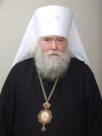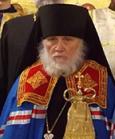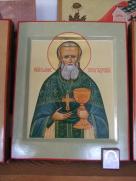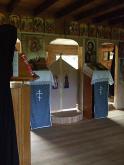Sunday, August 9, 2015
Presentation at the VI Annual Conference “The Paths of ROCA in the modern world.”
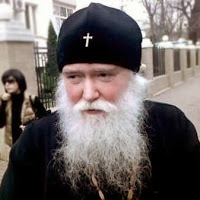 The internal organisation of Christians at the present time is the most central issue in the life of the Church today - it even becomes a question of the church’s survival. Our unity has been strengthened, but in exchange for this, we see and experience centrifugal forces which oppose unity. This is happening to such a degree that this force is ready to literally tear us to pieces at any time, and permanently at that.
The internal organisation of Christians at the present time is the most central issue in the life of the Church today - it even becomes a question of the church’s survival. Our unity has been strengthened, but in exchange for this, we see and experience centrifugal forces which oppose unity. This is happening to such a degree that this force is ready to literally tear us to pieces at any time, and permanently at that.
What are the elements driving this separation today? Basically, these are quite insignificant things: differing views on politics; superficial ecclesiological disputes; power ambitions of certain people; concerted work of our enemies; stubbornness of influential groupings (mini-sects within, which are constantly engaged in hindering and obstructing the action of the clerical hierarchy); the conscious or unconscious ‘name-of-God-worshiping’ heresy, (behind which is opposition to any clerical hierarchy, a kind of “Orthodox anarchism”). All this exists on the basis of misunderstanding the dogma of Church unity. This is what is evident on the surface. Each one of these issues can be examined further in detail, but this is not the core issue, the most important thing. Instead, I will try to point out what we can do to oppose these generally destructive trends. Of course, the One Who is capable of defeating evil and uniting all genuine Christians is, first and foremost, Christ the Saviour Himself, and thereafter, the Orthodox faith, hope and love. And also their mother – Wisdom, or in other words, sobriety in everything. What is demanded of us is our worthiness of this help from on high.
The early Christians – as is well known – lived completely independently of civil authorities – for them there did not exist frameworks of state and national borders. They lived as self-contained communities, with their inner life and laws. They had a clear-cut division between what was “of God” and what was “of Caesar”. The fact that the Lord did not come as an earthly king – as everyone had hoped – characterized their entire lives. There is not even a hint that early Christians were somehow attracted by worldly civil power. (This is in stark contrast to the majority of the Jewish people, who were anticipating their political leader, and to whom the Christians were – possibly – some kind of traitors and betrayers). It can be assumed that this is one of the important reasons why the Jewish people did not follow Christ. Christians did not even seek to influence the civil power. Possibly, the words of the Apostle Paul: “Let every soul be subject unto the higher powers. For there is no power but of God: the powers that be are ordained of God.” (Rom. 13:1) dictated, partly, an attitude of indifference and ascribing absolutely no significance to any civil authorities. For indeed, worldly power was something to which the early Christians were totally indifferent. They preached the Resurrection of Christ – regardless of class, social and national differences. They expanded their community up to practically all the then-existing known national borders, while at the same time, they were not troubled at all about the civil and political structure of the countries in whose territories they lived.
However, the early Christians did have their own internal discipline and organization. The people of the Church were ruled by bishops and priests. Even so their clerical rule was basically limited to preaching and spiritual supervision. Overseeing everything were the Apostles and, thereafter – the first bishops. They resolved difficult questions at general meetings, that is, through common consent, or – as they say nowadays – conciliarly. Those who lived in prosperity, raised money for those who were poor. They did not have that power-structure which later was invented by the [Roman] Catholics, making the Pope a civil ruler, attempting to subdue all the other Christians and ordinary citizens. We can say that the interest in purely civil “levers of power” first appeared only in the Roman Church, and – possibly – that interest played a negative role in the process of the Papacy’s falling away from the fullness of the Church.
In the IV century, the state power became Christian. This was a development Jesus actually never called for, and – one may say – He did not even bless by His example, as he renounced earthly lordship. As a result, many people who were far removed from Christianity entered the Church. Under these conditions, the genuine Church – in its essence – was forced to flee into the desert, forming monasteries around Spirit-bearing ascetics. From then on, monasteries essentially replaced the communities of the early Christians. Just as the groups of early Christians were headed by Bishops, the monasteries were headed by an abbot, who was not always even of clerical rank, who had his assistants, responsible for the various aspects of monastic life. Monasteries – like the early Christians – did not aspire to civil power – on the contrary, their very existence was caused by a departure, a flight from this. Their household was of a closed-type and – often – was completely independent of other economic structures. The monasteries had strict discipline and “obedience in labour”, inasmuch as they had to provide for themselves, for their sustenance and property. Property was in fact something they practically did not have, either in the form of dedicated collective property or “private property”. In the same way, these were not a reality with the early Christians because of the persecutions. Nevertheless, civil authorities who considered themselves Christian, began to “patronise” the monasteries. As a result, for example, in Russia, this patronising made the monasteries completely dependent on civil power. In our country [Russia], the same process occurred as for example in the Holy Land or on Mount Athos – monastery estates were built with the help of civil authorities, and were later populated by monastics. Churches (and the Christian communities around them) were built in the same manner. However, this was already very different from the early Christian community. We see – no matter how zealously genuine ascetics sought to withdraw from the world, the world, as a rule, overtook them.
Throughout the era of Orthodox emperors, or in other words – the Constantine Era – we see a kind of confrontation between the secular and spiritual forces. For the Church, the situation was often unbearable in this – however sincere – secular embrace. On the other hand, many secular citizens inhabiting the empire often resented “the yoke of the churchmen” and were not well disposed to the Church at all.
* * *
In the Soviet Union, the traditional original Christian communities were revived in the form of the Catacomb Church. The structure was very much like that of the early Christian communities of the time of the persecution by the Roman authorities. Indeed, persecutions in the Soviet Union were incomparably more violent than the persecutions of the early Christians. The catacomb communities in Russia had practically no contact with one another. They often did not even know whether there existed any bishops of the same faith, despite constant and intense searches for them. In practice the catacomb communities lived in complete isolation. They gathered together quite rarely, and only for common prayer. This isolation however, cemented the ranks of the people and made the community – in spite of everything – viable and active. The catacomb Christians exhibited great self-sacrifice, and collected significant sums of money (by the standards of that time). In practice however, they were unable to use these resources, because of the ban on private property in the USSR, and because of the full control by the state over all other property. I know of cases where catacomb Christians helped monasteries of the Moscow Patriarchate, only because they did not know how to utilize the monies and food that were collected; at the same time they categorically refused to help the Soviet government in any form whatsoever. At that time it was a matter of survival for the Christians, and they had no possibility of even thinking about missionary work and expansion. Unfortunately, by the end of persecutions in the 1980s, only a few remnants of catacomb communities survived, without any administration or organization. Some of them submitted to the Synod of Bishops of ROCA, as the only canonical church administrative structure that had been preserved until that time.
* * *
In the post-Soviet space of the Russian Federation and in other newly formed states, the Moscow Patriarchate has aimed to build a Byzantine-Soviet model of Church life, in a – so called – loyal state. In actual fact, it was impossible to build anything else whilst applying the same methods of the Soviet period. As a consequence, this structure has resulted in an all-powerful elite, and the mass of people without any kind of rights as the foundation. Internally, there exist popular initiatives within the Moscow Patriarchate. Almost all of them however, are of a sectarian nature (for example - morbid opposition to civil ID numbers, elder-worship, deification of the Tsar, Orthodox Stalinism and other types of political Orthodoxy, etc.). One exception is, perhaps, the struggle against ecumenism. However, unfortunately this is not organized in any specific movement. Perhaps at some time in the future, there will arise a common striving within the MP that would lead to a healthy recovery of that structure. However, even in the best case scenario, this is an issue for the future.
* * *
What are we to do? To provide a universal recipe is difficult, but one thing is clear: We all need closer communication - in all aspects, from prayer, to mission, to social and work activities. We should not to be frightened that in practical terms any “coming closer ” would be a threat to some worsening of relationships. However, any mutual estrangement – with a temporal illusion of pacification in our relationship - will finally result, upon closer contact, produce sudden contradictions that ultimately turn out to be incompatible. Past experience testifies to this. We do not live in isolation and nowadays communications are well-developed. We are free, and these days, in essence, we are not dependent on anyone in this world. We have all the conditions to lead a Christian life, and we are not restricted in this by anything external. But we, for some unknown reason, have chosen voluntary estrangement from one another. What is this? The historical -spiritual chain: Christ – to early Christian communities – to monasteries – to Catacomb Christians in the USSR – to ??? – must continue. We should not now attach any great significance to the civil powers than they deserve. In our day politics take up an unnaturally large space in the lives of people. It is clear that that the exorbitant interest in it is artificially devised in order to distract people with externals, and to lead them away from inner life. At present this problem is only within ourselves. It is quite obvious that our faithful children should not be avoiding one another, and fearing to communicate with each other. On the contrary, at the present time, only close communication is the true way to identify any falsehood and strengthen our genuine unity in Christ.
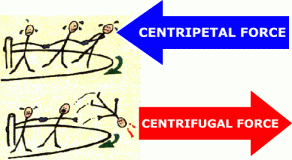 Editor’s note: Interestingly, the centrifugal force is actually the force perceived to influence an object when it is literally “forced” to move in a circle, rather than in a straight line (as it would do if undisturbed) - this centrifugal force works to move it out of the circular orbit.
Editor’s note: Interestingly, the centrifugal force is actually the force perceived to influence an object when it is literally “forced” to move in a circle, rather than in a straight line (as it would do if undisturbed) - this centrifugal force works to move it out of the circular orbit.
In analogy to the spiritual life, this is a person who, due to a greater estrangement from both Christ (who is at the centre of everything in the Church, towards Whom everything gravitates and Who keeps everything in order), and from his brothers, prefers moving on a straight line (individually, according to his own desires/understanding), rather than in a circle (in obedience to Christ, to his superiors and brothers). The centrifugal force exerts greater influence at the periphery of such circular movement, where the overall power of individual, straight-line movement is greater than the centripetal, attractive force (drawing an object towards the centre).
The closer a person is to the centre (Christ), the greater is the centripetal force keeping him within the Church. Conversely, the further a person moves away from Christ and away from personal obedience to his brothers and Christ Himself, the stronger is the force that appears to be pushing him out of the Church.
May our Lord preserve us from this, and allow us to abide in love and obedience, keeping us in His Holy Body, the Church.
